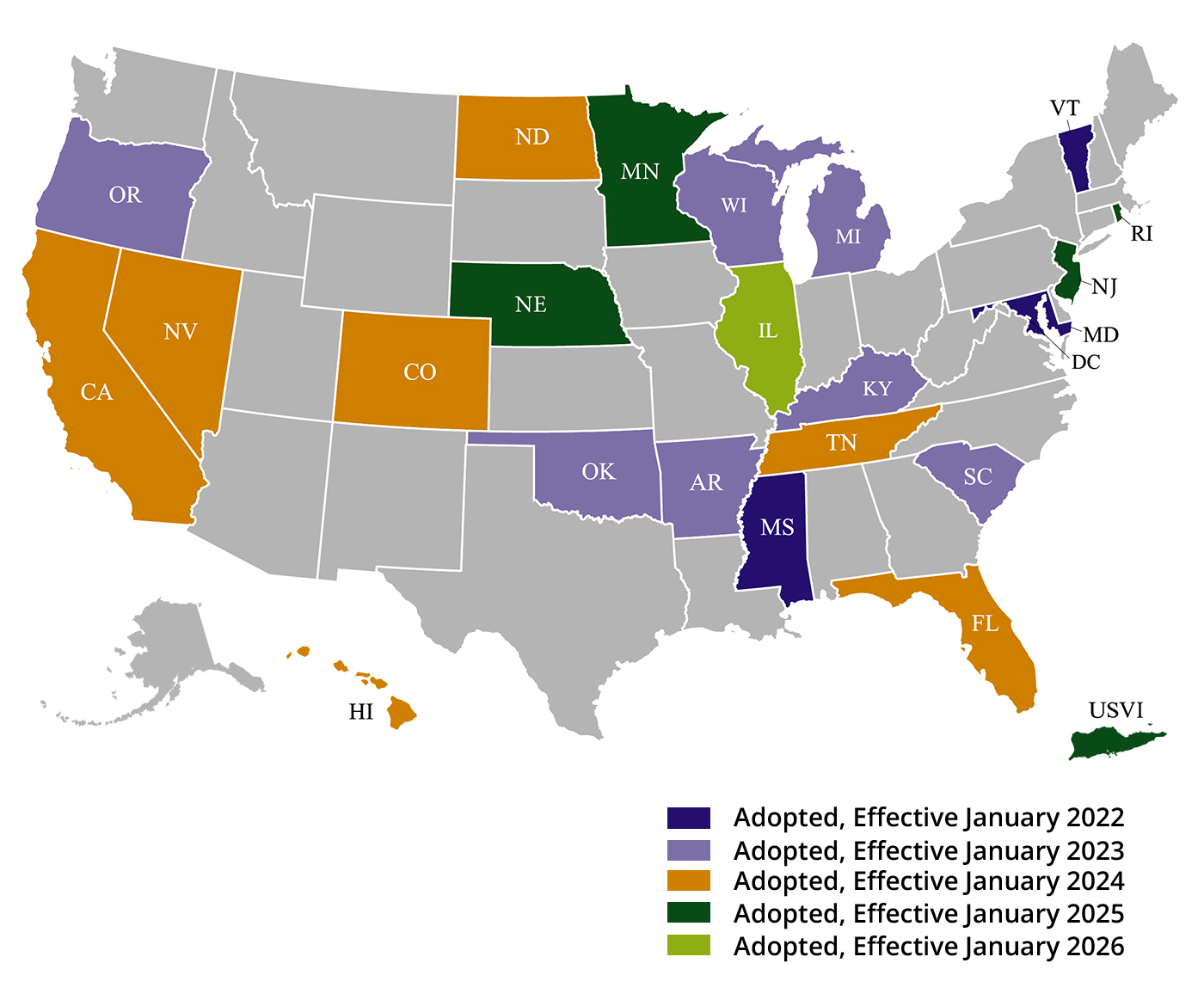NASAA Adopts Investment Adviser Representative Continuing Education Model Rule

The Continuing Education Model Rule for Investment Adviser Representatives (IARs) has multiple implications and effects for professionals throughout the financial services industry. Read more about the IAR Continuing Education (CE) Model Rule, who it will impact, where it is in effect, related requirements, and more.
What is Investment Adviser Representative Continuing Education (IAR CE?)
IAR CE is an annual continuing education requirement for IARs governed by the NASAA Model Rule on Continuing Education which was adopted in 2020 and implemented by states and jurisdictions beginning in 2022.
Why Was the IAR CE Model Rule Adopted?
NASAA’s membership, with strong industry support, adopted the IAR CE Model Rule to address the lack of a continuing education requirement for IARs in contrast to other financial services professionals. These types of professionals are often required to maintain or expand their level of knowledge and competence after initial qualification, which is what the IAR CE Model Rule will now accomplish for IARs.
Who is the IAR CE For?
Any Investment Adviser Representative (IAR) who is registered in a state or jurisdiction that has adopted the NASAA IAR CE Model Rule will be subject to its new CE requirements.
FINRA and IAR CE
For dual registrants, IARs who are also registered agents of BD firms, completion of the FINRA CE Regulatory Element may be applied to meet the Products and Practices component of the IAR CE requirement.
FINRA CE Firm Element training may also be applied to meet the IAR CE requirement if the training is approved by NASAA.
Professional Designation CE courses (CFP®, ChFC®, CFA®, PFS, CIC) are also eligible for IAR CE credit as long as they are approved by NASAA.
When Did the IAR CE Model Rule Go Into Effect?
The IAR CE Model Rule went into effect beginning in 2022.
State by State: Where is the IAR CE Model Rule in Effect?

State | Status | Effective Date |
Mississippi | Adopted | January 1, 2022 |
Vermont | Adopted | January 1, 2022 |
Maryland | Adopted | January 1, 2022 |
Michigan | Adopted | January 1, 2023 |
Wisconsin | Adopted | January 1, 2023 |
Kentucky | Adopted | January 1, 2023 |
| Oklahoma | Adopted | January 1, 2023 |
| Washington DC | Adopted | January 1, 2023 |
| South Carolina | Adopted | January 1, 2023 |
| Arkansas | Adopted | January 1, 2023 |
| Oregon | Adopted | January 1, 2023 |
| Colorado | Adopted | January 1, 2024 |
| Tennessee | Adopted | January 1, 2024 |
| Nevada | Adopted | January 1, 2024 |
| Florida | Adopted | January 1, 2024 |
| North Dakota | Adopted | January 1, 2024 |
| California | Adopted | January 1, 2024 |
| Hawaii | Adopted | January 1, 2024 |
| US Virgin Islands | Adopted | January 1, 2025 |
| Rhode Island | Adopted | January 1, 2025 |
| New Jersey | Adopted | January 1, 2025 |
| Nebraska | Adopted | January 1, 2025 |
| Minnesota | Adopted | January 1, 2025 |
| Illinois | Adopted | January 1, 2026 |
IAR CE Requirements
IARs are required to complete 12 hours of CE credit per year in order to maintain their IAR registration. This includes 6 hours of Products and Practices and 6 hours of Ethics and Professional Responsibility. An IAR taking more than 12 credit hours per year is not allowed to carry forward those excess credits into the following year.
Courses cannot be repeated. CRD tracking will include duplicate courses in the course transcript section if reported, but duplicate courses will not count toward the IAR CE requirement, even if completed in another year.
Kaplan provides both individual courses and a Total Access CE Library to help you fulfill this requirement.
What's the Deadline for Submitting Course Completion Rosters to Ensure They're Processed in 2025?
December 26th, 2025 at 4:00 pm ET. Any rosters submitted before this date will be processed as part of the 2025 renewal process. You must complete your CE courses prior to this date to ensure they are reported before the end of the year.
Can Course Rosters Still Be Submitted Between December 26th After 4:00 pm ET and December 31st, 2025?
Yes, the system will accept rosters during this time. However, they won't be processed until the system resumes operation on January 2nd, 2026, and registration statuses for individuals who are CE Inactive at 4:00 pm on December 26th will immediately advance to Fail to Renew (FTR). If an individual is FTR due to deficient CE on December 26th, their registration status will not update and will remain FTR until the CE deficiency is cleared and a new U4 is filed to re-register with the state.
Will Your 2026 Registration Be Affected if You Wait Until the System Downtime to Complete Your CE?
Expert Tip: It's crucial to stay on top of CE requirements and meet all deadlines to avoid registration issues.
Approved IAR CE Course Providers
IARs are required to take NASAA-approved CE courses from approved course providers. Any vendor, firm, individual, or state may provide CE so long as the provider and course are approved. The list of approved course providers—including Kaplan—can be found here.
IAR CE Costs
NASAA has implemented a course reporting fee of $3 per credit hour. Therefore in addition to any training costs, an IAR can expect to pay $36 per year to meet their CE requirement.
How Can I Check My IAR CE Status?
You can use the Financial Professional Gateway (FinPro) to review your IAR CE status, track completed courses, and more.
Learn more about Kaplan's course offerings here.


